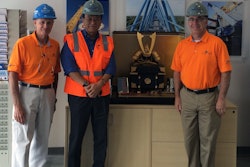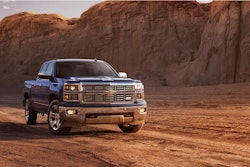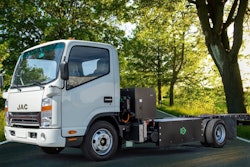 At at time when increased fuel efficiency and lower emissions keeps automakers on edge, Exa Corporation uses software that renders faster, more accurate and cost effective results than wind tunnel testing.
At at time when increased fuel efficiency and lower emissions keeps automakers on edge, Exa Corporation uses software that renders faster, more accurate and cost effective results than wind tunnel testing.Your truck’s aerodynamics matter. Not just for fuel economy, but for handling and noise reduction.
Enter Exa Corporation. This behind-the-scenes industry giant, based in Burlington, Ma., uses MIT developed software to conduct simulated aerodynamic tests for nearly every automaker on the planet.
The company’s PowerFLOW software has gotten so good that it’s fast replacing traditional wind-tunnel testing which costs automakers a lot more time and money.
“It’s several hundred thousand dollars to build a clay model or a prototype that you’re going to run (in a wind tunnel),” says Doug Hatfield, Exa’s managing director of heavy vehicles.
“With a CAD file and our technology, you can do that for hundreds of dollars. You can dramatically save time and cost.”
Wind-tunnels are not only more time-consuming and expensive, they’re also inaccurate since they can’t dependably recreate real-world conditions. Calculations, Hatfield says, are based on assumptions.
“In order to get the real world effects that an F-150 might face you need to have moving tires, rolling roads, and upstream in-flow into the vehicle which represents sort of a dirty environment called upstream turbulence, so that the vehicle experiences more robust, real-world conditions, and wind tunnels cannot provide that,” Hatfield explains.
Instead of having to physically alter a vehicle for wind-tunnel testing, engineers can quickly change the vehicle’s shape on the computer, add components and features and be confident of the test results.
Following testing, automakers will make changes to the vehicle to lessen drag. Air dams, front-end fascia, grilles, under body panels, active controls, active shutters, the A-pillar, the front quarter panel—all of these and more will impact drag, handling and wind noise levels.
There are other testing labs that offer computer-based aerodynamic testing, but they don’t have PowerFLOW’s unique algorithms paired with high performance computers which Hatfield says gives Exa an advantage.
“The benefit is that it is very, very accurate,” Hatfield says. “There is a high degree of confidence in the automotive industry and with our partners that they will get results that will translate into the real world.
“That enables them to do quite a bit of engineering work and ultimately reduce the number of prototype builds and physical adjustments.”
Some automakers, Hatfield says, are steering away from wind-tunnel testing completely. Jaguar Land Rover is an example. The U.K. based automaker, like other companies, is facing more pressure to meet stricter emissions regulations.
“There was no way that Land Rover was going to be able to sell that product line and meet the new CO2 (carbon dioxide) requirements in 2020,” Hatfield says. “The vehicles would not meet the target.”
In choosing between the U.K.’s only wind-tunnel and Exa, Hatfield says Jaguar Land Rover opted for Exa and got results. In the interim, they avoided costly and time-consuming soft prototypes that a wind tunnel would require.
Peterbilt has also benefitted from Exa’s PowerFLO technology. The Texas-based company, a subsidiary of Paccar Corporation, wanted to develop a tractor-trailer that was 50 percent more efficient than baseline models as part of the U.S. Department of Energy SuperTruck program.
They achieved their goal. The truck’s newly improved aerodynamics led to a 75-percent increase in fuel economy when compared to a standard 579 truck.
“The work we did with Exa on aerodynamic development was an enormous success as it gave us confidence that what we saw in the virtual world would translate to the commercial world,” says Ken Damon, senior project engineer at Peterbilt.
“If we had just gone down the wind tunnel path, making prototypes, the project would probably have taken 18 months longer in development.”









